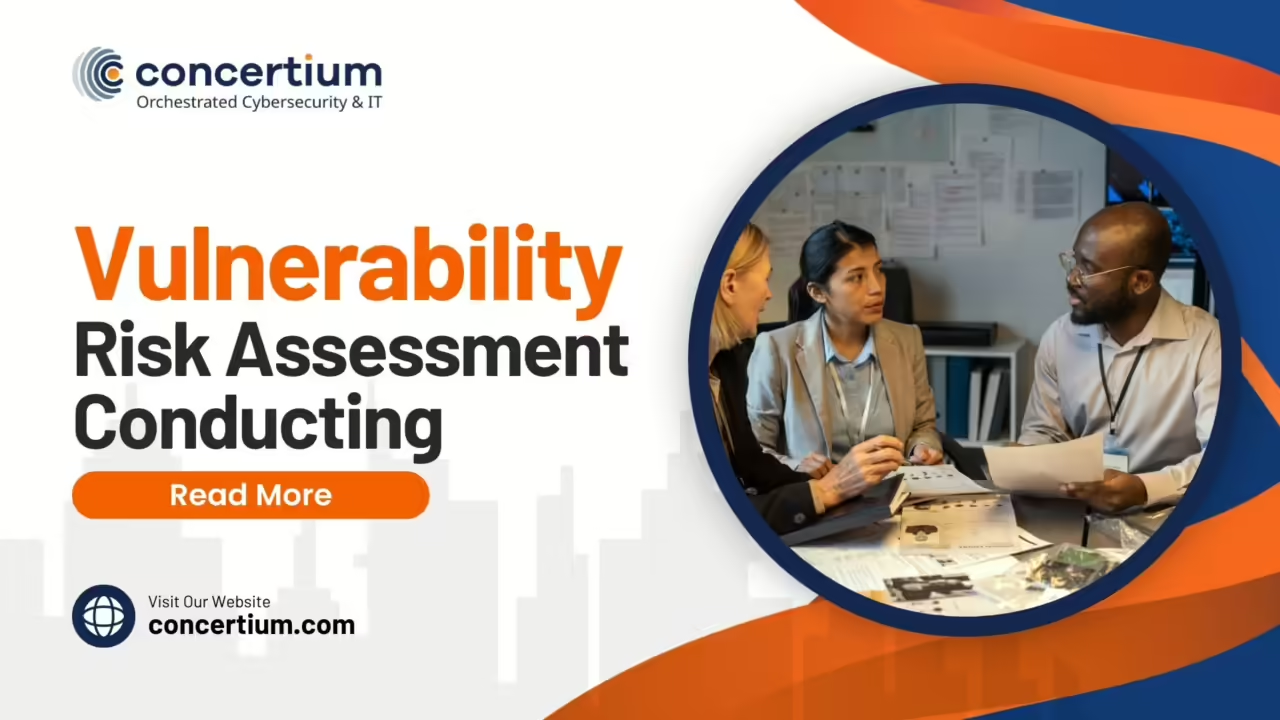Conduct Vulnerability Risk Assessment
Vulnerability Risk Assessment is a systematic process used to identify, evaluate, and prioritize potential hazards that could compromise an organization’s cybersecurity posture. It involves a thorough examination of systems, networks, and applications to detect weaknesses that malicious actors might exploit. Therefore, conducting a vulnerability risk assessment helps organizations understand their risk landscape and take proactive measures to mitigate these risks.
Above all, the importance of vulnerability risk assessment in cybersecurity cannot be overstated. In other words, it forms the backbone of an effective risk management strategy, ensuring operational continuity and protecting valuable data. For instance, regular assessments can prevent data breaches and reduce the potential impact of cyber threats. By identifying vulnerabilities early, organizations can implement targeted mitigation strategies, thus minimizing the risk of exploitation and enhancing overall security.
Understanding Vulnerability Risk Assessment
Definition and Scope
A vulnerability assessment evaluates the weaknesses within an organization’s IT infrastructure. It maps out potential risks and categorizes them based on their severity and likelihood. In addition, it encompasses a wide range of vulnerabilities, from software flaws to configuration issues and human errors. The scope of this assessment is comprehensive, aiming to uncover every possible threat to the system.
Types of Vulnerabilities Assessed
Different vulnerabilities pose different risks. Therefore, it’s crucial to assess various types, including:
- Technical Vulnerabilities: These include software bugs, outdated systems, and network flaws.
- Operational Vulnerabilities: Weaknesses in processes and procedures, such as inadequate access controls or poor incident response plans.
- Physical Vulnerabilities: Risks arising from physical access to facilities or hardware.
- Human Vulnerabilities: Errors made by employees, such as weak passwords or falling for phishing scams.
By understanding these types, organizations can develop a holistic approach to risk management and enhance their security posture.
Key Components of Vulnerability Assessment
Asset Identification
The first step in the assessment process is to identify all assets within the organization. This includes hardware, software, data, and personnel. For instance, by knowing what assets are in place, organizations can better understand where vulnerabilities might exist. This asset inventory forms the foundation for the subsequent steps in the vulnerability risk assessment.
Threat Identification
Next, organizations must identify potential threats to these assets. These threats can come from various sources, such as cybercriminals, natural disasters, or internal actors. Therefore, understanding the threat landscape is essential for evaluating the risk. By identifying threats, organizations can anticipate potential attacks and prepare accordingly.
Vulnerability Identification
After that, the actual vulnerabilities within the system must be identified. This involves using both automated tools and manual techniques to uncover weaknesses. Automated tools like vulnerability scanners can quickly detect known issues, while manual assessments can identify more complex or subtle problems. For instance, regular vulnerability scanning can reveal configuration errors or missing patches, which are common entry points for attackers.
Preparing for a Vulnerability Risk Assessment
Establishing Objectives
To begin with, establishing clear objectives is crucial for a successful vulnerability risk assessment. Determine what you aim to achieve. Are you looking to improve overall security? Or, are you focusing on specific systems? Above all, clearly defined objectives guide the assessment process and ensure relevant issues are addressed.
Gathering a Team
Next, assemble a skilled team to conduct the assessment. This team should include IT professionals, security experts, and risk management specialists. Their diverse expertise is essential. In addition, involve stakeholders from different departments to provide insights into various operational aspects. For instance, including a representative from HR can help identify vulnerabilities related to personnel.
Defining the Scope and Boundaries
Defining the scope and boundaries of the assessment is the final preparatory step. Identify which systems, networks, and applications will be evaluated. Also, determine the assessment’s depth—will it be a high-level overview or a detailed analysis? Clear boundaries prevent scope creep and ensure the assessment remains focused and effective.
Conducting the Vulnerability Risk Assessment
Step-by-Step Process
Conducting a vulnerability risk assessment involves a structured process. Follow these steps to ensure thoroughness and accuracy.
Asset Inventory
First, create a detailed inventory of all assets. This includes hardware, software, and data. By knowing what you have, you can better identify potential vulnerabilities. For instance, an asset inventory helps pinpoint outdated systems that may be more susceptible to attacks.
Identifying Threats
Next, identify potential threats to these assets. This involves understanding the threat landscape and recognizing possible sources of cyber threats, such as hackers, natural disasters, or internal actors. Use resources like the Concertium Vulnerability Management guide for comprehensive threat identification methods.
Detecting Vulnerabilities
After identifying threats, detect vulnerabilities within your systems. Utilize both automated tools and manual techniques. Automated tools can quickly scan for known issues, while manual assessments can uncover complex or subtle weaknesses. Regular vulnerability scans are vital for maintaining up-to-date security.
Analyzing Impact and Likelihood
Finally, analyze the potential impact and likelihood of each identified vulnerability. Use qualitative and quantitative methods to evaluate the severity and probability of threats. Create a risk matrix to visualize and prioritize risks based on their potential impact on the organization.
Tools and Techniques for Vulnerability Risk Assessment
Automated Tools
Automated tools are essential for efficient vulnerability risk assessments. They quickly scan systems and identify known vulnerabilities. Popular tools include OpenVAS, and Qualys. These tools streamline the assessment process, providing rapid results and detailed reports.
Manual Techniques
Manual techniques complement automated tools by identifying complex vulnerabilities that automated scans might miss. This involves reviewing code, inspecting configurations, and conducting penetration tests. Manual assessments require skilled professionals who can interpret findings and provide actionable recommendations.
Best Practices for Effective Assessment
Following best practices ensures an effective vulnerability risk assessment. Regularly update assessment tools to keep pace with emerging threats. In addition, maintain a balance between automated scans and manual techniques. Finally, document findings and actions taken for future reference and compliance purposes.
Evaluating and Prioritizing Risks
Risk Matrix
A risk matrix is a valuable tool for evaluating and prioritizing risks. It maps out risks based on their severity and likelihood, providing a clear visual representation. By categorizing risks, organizations can focus on the most critical issues first.
Criticality Ratings
Assigning criticality ratings to vulnerabilities helps prioritize them. Criticality ratings are based on the potential impact and exploitability of each vulnerability. This ensures that resources are allocated effectively to address the most significant risks.
Prioritization Strategies
Implement prioritization strategies to address vulnerabilities. Focus on high-impact, high-likelihood vulnerabilities first. Develop mitigation plans for these critical issues while monitoring and managing lower-priority risks. Effective prioritization enhances overall security posture and resource utilization.
Mitigating Identified Risks
Developing Mitigation Plans
Develop comprehensive mitigation plans to address identified vulnerabilities. These plans should include specific actions, timelines, and responsible parties. Effective mitigation plans reduce the risk of exploitation and enhance security.
Implementing Security Measures
After developing mitigation plans, implement the necessary security measures. This may involve patching software, updating configurations, or enhancing access controls. Implementing these measures promptly is crucial for reducing vulnerabilities.
Continuous Monitoring and Updating
Continuous monitoring and updating are essential for maintaining security. Regularly review and update mitigation plans to address new threats and vulnerabilities. Continuous monitoring ensures that security measures remain effective over time.
Reporting and Documentation
Creating Detailed Reports
Create detailed reports to document the findings of the vulnerability risk assessment. These reports should include identified vulnerabilities, their severity, and recommended mitigation actions. Detailed reports provide a clear record of the assessment process and its outcomes.
Communicating Findings to Stakeholders
Communicate findings to stakeholders effectively. Use clear and concise language to explain vulnerabilities and their potential impact. Provide actionable recommendations to address identified issues. Effective communication ensures that stakeholders understand and support necessary security measures.
Maintaining Documentation for Compliance
Maintain comprehensive documentation for compliance purposes. Detailed records of assessments, findings, and mitigation actions are essential for regulatory compliance and future reference. Proper documentation supports ongoing risk management efforts.
Challenges and Best Practices
Common Challenges in Vulnerability Risk Assessment
Vulnerability risk assessments face common challenges, such as limited resources, evolving threats, and complex IT environments. Addressing these challenges requires strategic planning and effective resource allocation.
Best Practices for Overcoming These Challenges
Implement best practices to overcome challenges. Regularly update assessment tools and techniques to keep pace with emerging threats. Involve a diverse team with expertise in various areas of cybersecurity. Prioritize continuous learning and adaptation to enhance assessment effectiveness.
Future Trends in Vulnerability Risk Assessment
Emerging Technologies
Emerging technologies are shaping the future of vulnerability risk assessment. Artificial intelligence, machine learning, and advanced analytics are enhancing threat detection and risk management. These technologies provide deeper insights and more effective security measures.
Future of Cybersecurity and Risk Management
The future of cybersecurity and risk management involves greater integration of advanced technologies and proactive strategies. Organizations will need to continuously adapt to evolving threats and leverage innovative solutions to protect their assets and maintain operational continuity.
What People May Also Ask
What is a vulnerability risk assessment?
A vulnerability risk assessment is a systematic process of identifying, evaluating, and prioritizing potential security weaknesses in an organization’s IT infrastructure.
How often should a vulnerability risk assessment be conducted?
It is recommended to conduct a vulnerability risk assessment at least yearly. However, more frequent assessments may be necessary for high-risk environments.
What are the most common vulnerabilities found during an assessment?
Common vulnerabilities include software bugs, outdated systems, weak passwords, and misconfigured settings.
How can I prepare my organization for a vulnerability risk assessment?
Preparation involves establishing clear objectives, assembling a skilled team, and defining the scope and boundaries of the assessment.
Conclusion
In conclusion, conducting regular vulnerability risk assessments is essential for maintaining a strong security posture. By identifying and mitigating vulnerabilities, organizations can protect their assets and ensure operational continuity. Therefore, implementing these assessments as part of a comprehensive risk management strategy is crucial.





